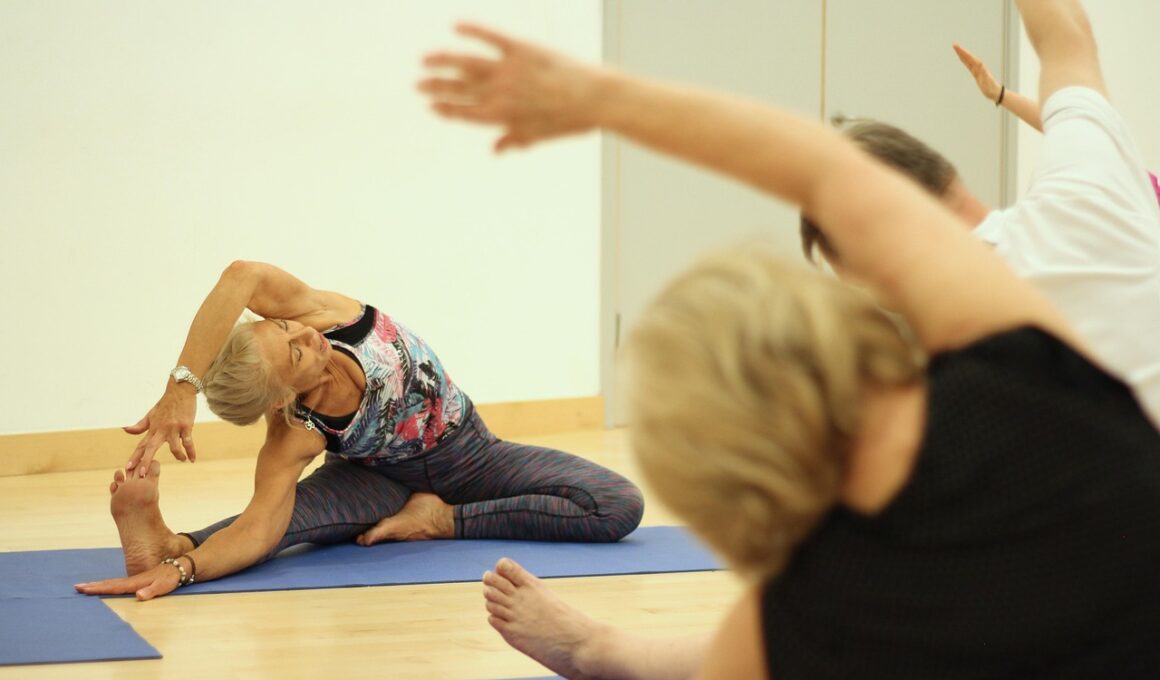Case Study Series: Impact of Stretching on Posture Improvement
Posture plays a critical role in overall health and well-being, impacting not just physical alignment but also psychological state. Numerous studies support the notion that good posture contributes significantly to improved mood and productivity. In this case study series, we aim to explore the specific impact that stretching exercises have on improving posture among various demographics. Conducted in office settings and wellness programs, these case studies will highlight real-world applications of posture enhancement techniques. Notably, participants reported a considerable decrease in discomfort resulting from prolonged periods of sitting, which is a common issue in today’s sedentary lifestyle. The exercises included various types of stretches focusing on the neck, shoulders, and lower back. An emphasis on making stretching a routine part of daily activities formed a major focal point of these studies, allowing individuals to incorporate these practices seamlessly into their lives. If you’re interested in learning more about effective stretching techniques for posture improvement, feel free to explore additional resources at Example Website. Let’s take a closer look at the first of several intriguing case studies that illustrate this beneficial impact.
Case Study Overview
In our first case, we analyzed a group of office workers suffering from chronic neck and back pain attributed to their workstations. Participants engaged in a tailored stretching program for six weeks, focusing on stretches that released tension in the upper body. These exercises were conducted twice daily, with variations like seated neck rotations, shoulder rolls, and thoracic extensions. Pre-and post-intervention assessments measured changes in pain levels and overall posture. Interestingly, participants reported an average pain reduction of approximately thirty percent, demonstrating a significant correlation between regular stretching and alleviation of discomfort. Furthermore, posture assessments revealed marked improvements, with individuals showing enhanced spinal alignment and reduced slumping. Visual comparisons of before-and-after postures illustrated these transformations remarkably well. As a part of the program, participants also received educational materials highlighting the importance of maintaining good posture during daily activities. These findings not only affirm how crucial regular stretching is for alleviating pain but also underline its importance for improving posture effectively. Engaging in short, frequent stretching sessions has shown to foster a mindful approach to one’s body while effectively addressing posture issues.
Continuing with our case studies, we examined a cohort of school children aged nine to twelve, who often neglect proper posture while using devices. Given the increase in screen time, we aimed to investigate the role of stretching in helping them maintain a healthy posture. The study involved educational components alongside a stretching regimen implemented during physical education classes. Children participated in a ten-minute stretching routine that included spinal twists, hip openers, and upper back stretches. Teachers noted a positive shift in the children’s overall attentiveness and engagement during classes, as they felt less fatigued. Furthermore, post-intervention feedback from both students and parents indicated an increase in awareness regarding the significance of good posture. Assessment metrics revealed approximately forty percent of participants improved their posture by the end of the study. The excitement of incorporating movement into their routines contributed positively to their emotional responses. This case demonstrates not just physical benefits but also enhances cognitive focus and an improved approach to learning, highlighting that even minor changes like stretching can yield significant overall well-being improvements.
Office Worker Case Analysis
In a deeper analysis of the office worker case, we detailed specific stretch routines participants practiced. The routines emphasized frequently neglected muscle groups, particularly those affected by prolonged sitting, like hip flexors and thoracic spine muscles. To ensure consistency, participants were provided with visuals and instructions in the form of a stretching guide they could refer to anytime. Reports indicated that dedicating just five to ten minutes of their breaks to stretch greatly increased their productivity levels. Upon analyzing the data collected, we considered not only physical outcomes, but also mental health improvements observed. Reduction in stress and anxiety levels were reported alongside physical benefits, which strengthened the argument for integrating such practices in workplace wellness programs. The case indicated a direct connection between physical well-being and mental clarity, which employers can leverage to improve overall workplace morale. Long-term implementation of stretching routines is encouraged, particularly for those spending more than six hours at their desks. This case study reinforces the importance of holistic approaches in workplace health strategies, allowing employees to thrive physically and mentally while maintaining high efficiency.
The necessity of incorporating stretching routines extends beyond traditional work settings. In this case study, we evaluated a group of freelancers, who often experience irregular work hours and decreased physical activity. This demographic typically encounters a unique set of challenges concerning posture due to various working environments and habits. Implementing a flexible stretching program tailored to individual schedules became vital for success. Freelancers participated in an hour-long workshop that demonstrated effective stretches focusing on core strength and flexibility. Common issues addressed included tension headaches, back pain, and poor spinal alignment. Feedback sessions conducted post-intervention indicated significant improvements in pain levels and participants’ willingness to adopt stretching into their daily routines. An interesting pattern emerged as individuals reported combining stretches with creative breaks, allowing moments of relaxation and mental rejuvenation. Overall, this analysis contributes insights into how diverse working conditions can benefit immensely from stretching exercises. The findings aim to encourage other freelancers to embrace healthier work habits that enhance posture and well-being, proving once more that simple changes can lead to remarkable improvements in productivity and health.
Broader Implications of Stretching
To generalize the findings from our case studies, the implications of regular stretching for posture improvement reach broader communities. Beyond the office and school settings, individuals from various backgrounds can adopt short, simple stretching routines to enhance their physical health. The simplicity of these exercises ensures that people of all ages can practice them, creating accessible pathways towards better posture awareness. Moreover, there is promising evidence that suggests integrating stretching programs into fitness routines and wellness initiatives can universally have positive ramifications. In particular, fitness novices and those getting back to exercising find that stretching routines alleviate muscle stiffness while improving flexibility. Our case studies reveal a potential shift in community health initiatives as local organizations embrace stretching as a fundamental component of wellness curricula. By fostering a culture of proactive health management through stretching, communities could collectively witness reductions in injury rates and improved general health statistics. The movement toward recognizing posture’s importance in daily life demonstrates an exciting evolution in public health strategies that encourage ongoing engagement with physical well-being.
As we conclude this series on stretching and posture improvement, it’s crucial to assess how these studies may influence future practices. The primary takeaway relates to the simplicity and effectiveness of incorporating stretching into everyday routines. As people become more aware of their posture, resources should proliferate that educate them on proper techniques. This can foster a generation that values and prioritizes ergonomic practices in work and leisure. Additionally, with advancements in wearable technology, future studies could explore how devices tracking posture throughout the day influence behavioral changes. This intersection of technology and health presents a ripe area for further research, allowing people to engage more interactively with their posture. Keeping abreast of tailored stretching techniques, along with consistent repetition, can help society address challenges posed by sedentary lifestyles. Ultimately, stretching should not be viewed merely as an exercise regimen but as a critical health component of daily life. As we carry forward the knowledge garnered from these case studies, the integration of improved posture practices into our lives is not only desirable but essential for lasting health and wellness.
Future Directions and Conclusion
In an era where the prevalence of poor posture is facing increasing attention, these case studies illuminate a pathway towards improvement. The varied positive impacts stretching can have on our physical and mental health present an opportunity for educators, employers, and health professionals to promote effective stretching practices across diverse settings. We envision a future where stretching becomes a routine part of office cultures, educational systems, and community health initiative programs. As we embark on this journey, collaboration among stakeholders will be vital to raise awareness about the importance of proper posture and stretching. Public health campaigns could play a strategic role in disseminating knowledge and resources, ensuring communities engage in practices that prioritize their physical well-being. It is our hope that these case studies will serve as a foundation for further research and initiatives aimed at making stretching an integral habit for everyone. As we embrace the transformative power of stretching, we look forward to witnessing a significant change in posture-related health outcomes, making it simpler for individuals to enjoy richer, healthier lives. The journey towards better posture starts today.


